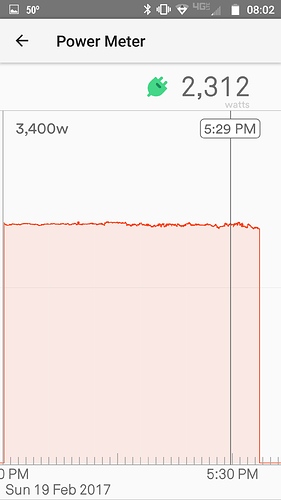I know many of us have had differing levels of accuracy and speed in identifying appliances around our house and I just wanted to post my experience. I’m pretty happy with device detection so far, although it has been a bit of a rollercoaster ride of discovery.
One interesting thing I’ve noticed, and I think I’ve seen some others report here and elsewhere, is that a number of my appliances on 240v are being identified as separate devices - not different components to a whole, like many also see (for example, different heating elements of a stove), but one of two legs of power for that appliance. Below are some examples of accurately identified appliances, followed by one that Sense is still having trouble with and still seems to be working on.
First, my heat pump:
Leg one:
Leg two:
Whole device, in the usage tab:
Next, my main stove element:
Leg one:
Leg two:
Whole device (note - a surface burner is also running at the same time)
Finally, my water heater, which Sense sometimes recognizes completely, sometimes recognizes only one leg of, and sometimes fails to recognize at all. Of my 240v devices, this is the only one that has a relay timer in between the panel and the appliance.
Full recognition:
The above run in usage (note our coffee maker is going as well):
Half recognition from yesterday:
As I noted in another thread, I’m not really too bothered by this phenomenon (other than wishing my water heater behaved the same as my stove and heat pump), but wanted to report my observations in case others are seeing this and are confused or not sure what to make of it. In case you’re wondering, the pieces don’t appear to add up to the whole because the whole is also considering background watts, our always on essentially.
We have a relatively small home - 2100sf ranch (built circa 1999), single fridge, single AC/heat pump, single stove, single water heater, etc. Pretty uncomplicated, really, and I can visually identify most every appliance we own from the usage tab when it’s running, even if device identification hasn’t picked them up yet. The device identification merely helps separate an appliance out from the herd, where it can be critically evaluated for poor function if necessary. Our lights are entirely LEDs, and I am under no illusion that they’ll be identified, nor do I care really - I have other means to identify whether lights are on or not.











